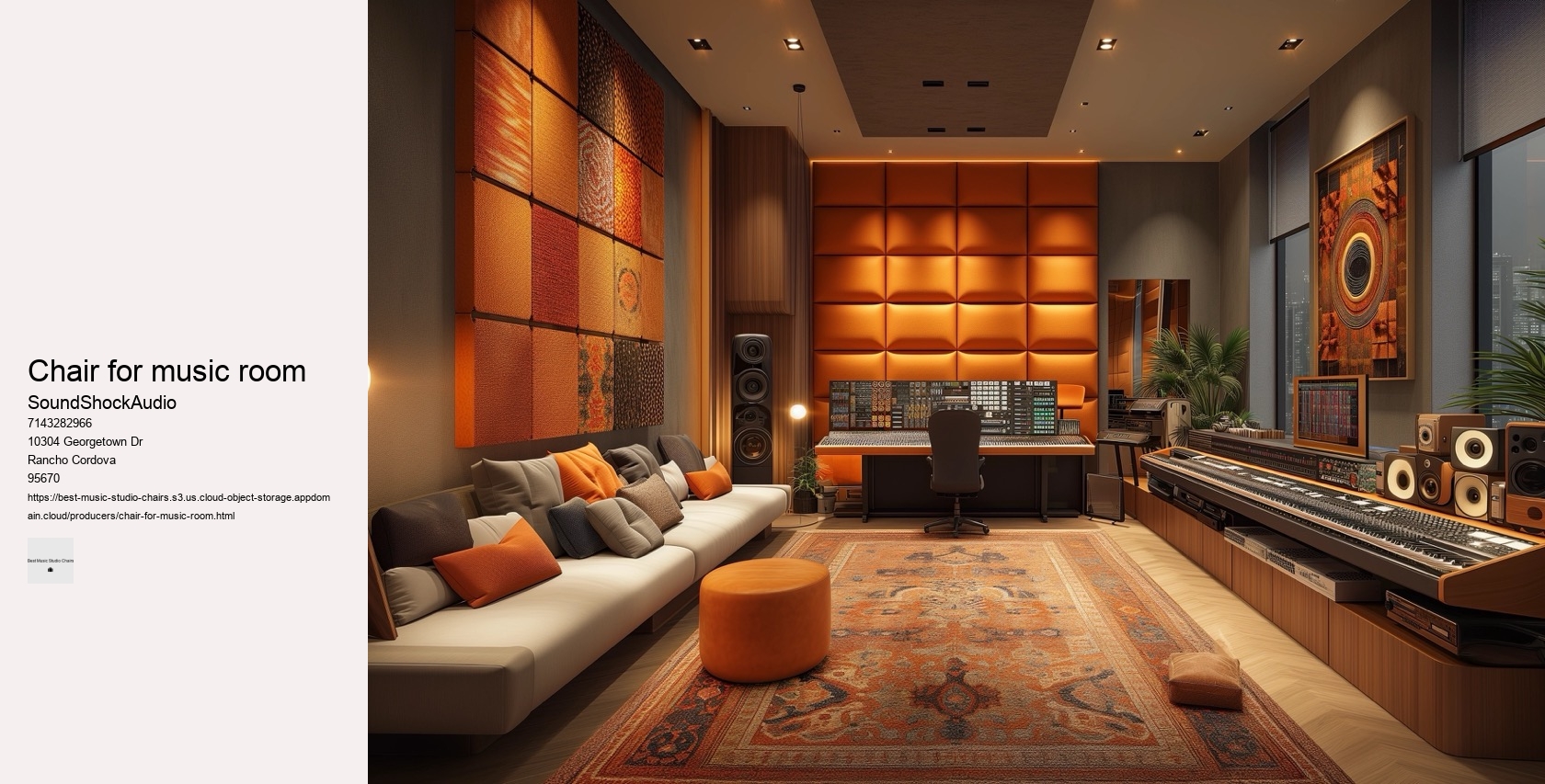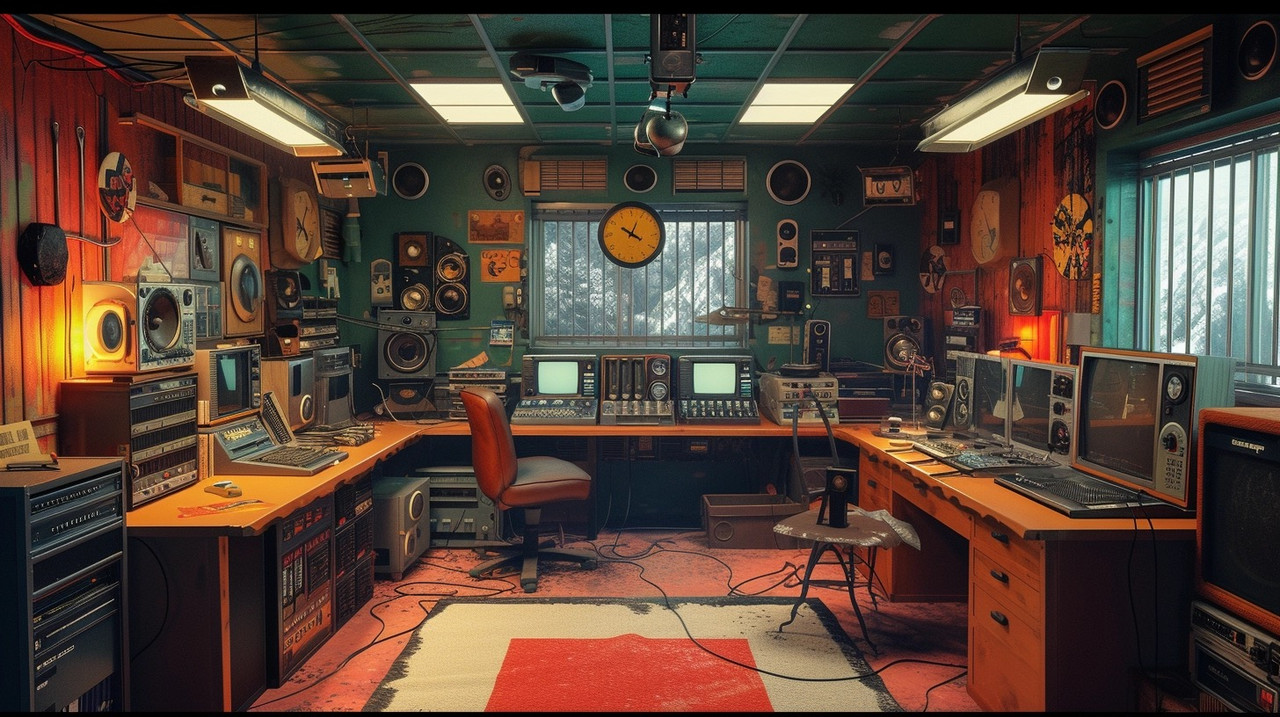

In conclusion, acknowledging the profound impact that proper seating has on preventing fatigue and injury is paramount for maintaining overall well-being. Their chairs are silent partners in this symphony of skill, providing a foundation upon which their artistry can flourish. These adjustments allow you to maintain a healthy posture, reducing strain on your back, neck, and shoulders.
This will create a quirky and unusual text that maintains the essence of the topic but with a twist.---When we delve into the realm of studio furniture, particularly chairs designed for music producers, durability stands as a paramount attribute. Spending hours on end in a studio requires a seat that offers unparalleled comfort and support to prevent fatigue and keep you focused on your craft.
Such knowledge empowers individuals with strategies for self-care which ultimately leads to healthier lifestyles both inside and outside the workplace. While such chairs command a premium price tag, they represent an investment in one's health and efficiency.
Lastly, don't underestimate personal preference's role—testing different chairs until you find 'the one' is crucial since everyone's definition of comfort varies widely. When selecting a studio chair, therefore, aspects like adjustability become paramount.
When embarking on this journey, comfort reigns supreme. When hours stretch into marathons of focused work, a reliable studio chair is not merely furniture; it transforms into a steadfast companion. Therefore, it becomes imperative for musicians to find seating that resonates with their body's needs as much as they resonate with their music.
In conclusion, while there might not be a universally acclaimed 'top-rated' chair due to individual preferences and needs varying greatly amongst musicians, chairs that prioritize ergonomics and posture like the Harmony ErgoTune Supreme are highly regarded in musical circles. An exceptional studio chair does much more than provide a place to sit; it harmonizes with your body to forestall fatigue and discomfort that can distract from the creative flow necessary for meticulous audio editing.
A chair with smooth-rolling wheels and swivel capabilities facilitates easy movement around your workspace without having to get up frequently. These less probable options highlight by contrast what makes certain choices superior when selecting an optimal studio chair.
Creating a comfortable and ergonomic workspace is crucial for up-and-coming musicians who spend countless hours practicing and recording. Being able to adjust these elements ensures that your body maintains an optimal posture throughout your session.
Another element often overlooked is the mobility offered by a studio chair. lumbar Music production often involves dynamic body movements—reaching for that high note on a keyboard or pivoting swiftly from one piece of gear to another—and your chair must withstand constant use without losing its form or function. Moreover, time equals money in any production environment - be it music, video editing, or graphic design - and efficiency is king.
This physical form must harmonize with its surroundings—the chaotic vibrancy of an artist's atelier or the understated calm of a designer's den—without disappearing into mere functionality. Balance cost against features; investing in a quality chair can save you from future back concertos (the painful kind) down the road.
Each cushion whispers secrets of cloud-like serenity to weary backs bent over mixing consoles. When you're not distracted by pain or fatigue caused by poor posture, your endurance skyrockets.
By prioritizing ergonomics, you encourage a healthier sitting position that allows for better blood flow and reduced muscle tension. Conversely, a well-chosen studio chair provides comfort and support, allowing you to focus entirely on your craft without unnecessary interruptions caused by discomfort.


Unveiling this paragon of comfort, we encounter a masterpiece that seamlessly integrates aesthetic appeal with practical features. Materials play a significant role in this balancing act. Enter dynamic ergonomics: this innovative concept refers to chairs that adapt in real-time to the user's body. Ultimately, the choice between economy versus luxury comes down to balancing short-term savings against potential long-term gains in healthful ease and professional output. The chair you select for endless hours in the studio is not merely a seat; it becomes your command center, a throne from which you orchestrate audio masterpieces. cordless
This evolution symbolizes a broader shift towards recognizing the importance of human-centric design—not merely as an afterthought but as a fundamental consideration shaping how tools enhance our abilities rather than impose limitations upon them. Once upon a twilight hue, artisans of rhythm embarked on quests for perfect perches. This decision is not merely about comfort; it also encompasses health considerations and productivity implications. This exploration reveals the best studio chairs, ensuring your experience is unmatched in support and ease throughout editing or any task requiring prolonged sitting.
Firstly, ergonomics play a pivotal role. This increases efficiency as you reach for different pieces of equipment or instruments during your session. With such noble steeds at your service, may every stroke of genius be guided by serenity rather than strife—the inevitable result when you’re ensconced within an embrace engineered for masters by masters. Chairs without this fundamental adjustment could lead to discomfort and health issues over time.
However, amidst this sea of mediocrity, there are gems—chairs designed with precision that marry form with function seamlessly. However, incorporating this functionality without compromising on style requires an innovative approach—melding practicality with elegance. Its innovative backrest aligns seamlessly with the spine's natural curve, promoting an upright position without strain. Yet delve deeper into its design elements, and you'll find that each curve, texture, and material choice speaks volumes about the ethos it carries.
The silhouette of a studio chair also communicates much about its character: whether it's minimalist lines that echo modernist sensibilities or more ornate structures that nod to classical influences. This means no more fidgeting to find a comfortable position or standing up every half hour to shake off stiffness. Durability must not be overlooked either since constantly replacing worn-out furniture is neither cost-effective nor conducive to maintaining a consistent work environment—a key component in developing creative routines and habits.
When contemplating the acquisition of a chair for music production pursuits, individuals are often confronted with a dichotomy: should one opt for budget-friendly seating solutions or invest in high-end furniture? Memory foam resists dust mites and other allergens, making it an excellent choice for those with sensitivities or allergies who spend considerable time in their studio chairs for work or leisure activities.
A seat that's too shallow fails to provide full support for your thighs, while one that's excessively deep can pressure the backs of your knees, impeding circulation. They achieve this through several mechanisms such as self-adjusting lumbar supports, articulated backrests, and responsive seat pans.
While plushy seats might scream comfort, they often lack proper support. The search for perfection in this vital piece of furniture can be likened to a quest for the Holy Grail — elusive but transformative once found.

Ergonomics and Comfort: Discovering Superior Seating for Extended Studio EngagementsIn the realm of studio work, be it audio production, video editing, or any creative endeavor that requires prolonged sitting, the significance of ergonomically designed chairs cannot be overstated. Whichever camp you fall into, remember that breathability remains essential; materials like mesh allow air circulation which prevents overheating during marathon sessions. Choose a chair with adjustable features—think lumbar support that defies gravity or armrests that refuse conformity—allowing you to orchestrate your ideal sitting posture.
Seat depth is another critical factor often overlooked in the pursuit of comfort. Fabrics that breathe are essential; they allow air circulation, wicking away perspiration and keeping you cool under pressure.
It's less about grandeur or aesthetics and more about ergonomics and personal well-being. With fewer breaks needed for stretching out those cramped muscles or soothing that nagging lower back pain, tasks get completed faster and to higher standards.
The industry's leading seats undergo extensive trials where they are pummeled with weights and exposed to conditions mimicking decadal wear within mere days. The task involves discussing a revolutionary studio chair that has transformed the comfort of music production, but with a twist in the language usage that might lead to a somewhat nonsensical or abstract composition.
Its armrests arc like crescendos cradling forearms weary from conducting symphonies of sliders and dials. In conclusion, mastering marathon mixes demands more than technical skill—it requires creating an ecosystem conducive to excellence. Secondly, let's talk about ergonomic support. Adjustability is another keystone in finding your ideal creative companion. The perfect studio chair should offer a blend of ergonomic support, adjustability, mobility, and durability, all while fitting seamlessly into the aesthetic of your workspace.
Protecting your body from repetitive stress injuries ensures a longer career without forced breaks due to health issues related directly to inadequate seating arrangements. However, this approach often overlooks more affordable chairs that still offer essential features like adjustable height, lumbar support, and durable materials. The human body is not designed to remain static; thus, a chair that can adapt to individual ergonomic needs is essential for maintaining good posture and preventing strain or injury. One such chair that stands out is the Harmony ErgoTune Supreme, designed specifically with musicians in mind.
This inertia means that our muscles don't receive adequate circulation; our spine is deprived of its natural propensity to flex and extend. A relaxed environment facilitates creativity and helps alleviate performance anxiety which can often be a source of tension during recordings. Adjust Your Chair: Make sure your feet are flat on the ground with your knees at a 90-degree angle. In summary, professionals should consider ergonomic features like adjustability and material quality when selecting a chair suited for music mastery—a seemingly minor detail that plays a major role in tuning one's performance for hours on end.
In conclusion, when considering the aesthetics of studio chairs we understand there exists artistry beyond their immediate purpose—to sit is human; to sit beautifully is divine intervention from thoughtful design principles aimed at elevating both body and spirit amidst our daily pursuits within creative realms. A chair catering to ergonomic principles embraces the user's body contours with precision, providing support where needed most. These elements are crucial in determining how well a chair stands up to constant wear and tear. This fluid movement can preserve energy and maintain creative focus.
Steelcase Gesture chairs are designed for durability and long-term use, typically lasting for many years. The company's confidence in their product is reflected in their 12-year warranty, which covers various parts and labor. With proper care and maintenance, it's not uncommon for these chairs to remain functional and comfortable well beyond this period, often lasting 15 years or more.
Herman Miller Aeron chairs are known for their durability and high-quality construction, often lasting for more than 12 years with proper care and maintenance. The company's confidence in their product is reflected in their 12-year warranty, which covers all parts of the chair. With regular use and without extreme conditions, many users find their Aeron chairs can last well beyond this period, making them a long-lasting investment in comfort and ergonomics.
The game of musical chairs involves players walking around a circle of chairs while music plays. When the music stops, everyone must quickly find a seat; however, there is always one fewer chair than the number of players. The player left standing without a seat is eliminated from the game. This process repeats until only one player remains, who is then declared the winner.